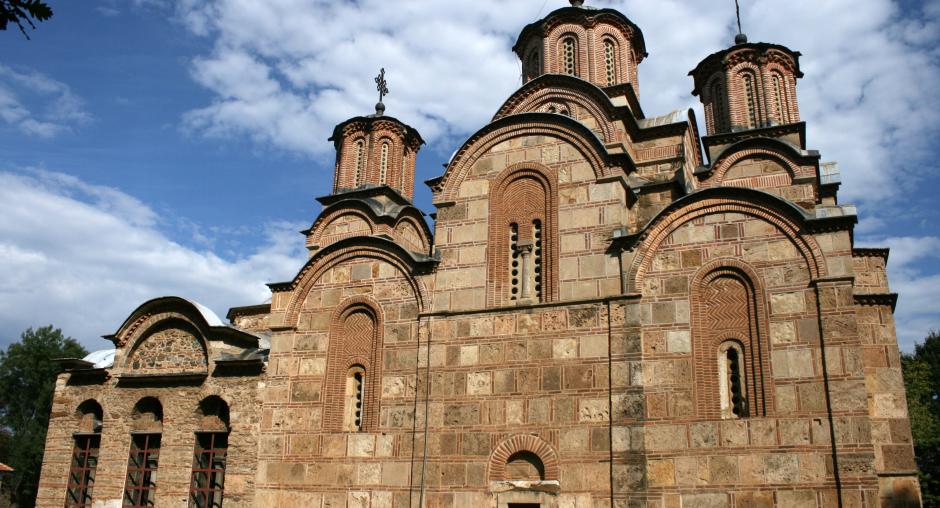OSCE Mission helps young people in Kosovo learn about shared cultural heritage
It took no effort to notice Suada, 18, in a group of 50 joyful and gleeful Kosovo Gorani youngsters on that sunny day. With her professional camera she was trying to capture the best perspective of a picturesque yard of the Serbian Orthodox Church’s Peć Patriarchate Monastery in Western Kosovo that she and the group were visiting. Earlier that day the group visited Visoki Dečani Monastery – the town of Pejё/Peć was to follow.
Suada and her Kosovo Gorani peers were part of the OSCE Mission’s initiative to bring cultural and religious heritage closer to young people from different communities, help them understand its importance and realize why it matters to preserve and promote cultural heritage for generations to come. From May to June 2014, more than 500 children from different communities had an opportunity to visit more than ten sites all over Kosovo.
A culture of learning
“Young people from different communities in Kosovo have very limited or no opportunities to visit sites associated with other communities, or to get together and learn more about each other. We organized these visits to give young people this chance,” says Silke Nebenführ from the Mission’s Property Section.
Suada acknowledged this: “I do not have much opportunity to go out of my home town Dragaš and this is the first time I’ve visited a monastery,” she said. “I think getting to know the culture of other people will only increase your understanding of them and make you realize we have something in common despite our differences.”
Earlier in May, Denis, a 15-year-old Kosovo Albanian, visited Sinan Pasha Mosque, dating from Ottoman times, as well as the historic center of Prizren.
“I really liked the Mosque, and the golden plaited icon in St. George Church. We were even told if you drink water from Shatërvan square you will soon meet the love of your life,” Denis said smiling.
Aleksa, also15, a Kosovo Serb from Leposavić/Leposaviq in northern Kosovo, travelled for the first time to central Kosovo and visited the Serbian Orthodox Church’s Gračanica Monastery. “I am so happy,” Aleksa briefly said. “I wish I had this chance earlier.”
Silke firmly believes that this and similar initiatives could help increase tolerance and better understanding among communities in Kosovo. “Despite efforts to protect and promote cultural and religious heritage in Kosovo, sporadic incidents, acts of vandalism and illegal construction still threaten it,” Silke added. “It clearly shows there is still work to be done.”
Shared culture, shared values
Suada believes more should be done to preserve and promote cultural heritage in Kosovo. “It starts with understanding its importance. What I saw today was a piece of art and it should be preserved as it is. Not a single stone should be touched, let alone something worse,” says Suada.
The OSCE Mission plans to continue working on cultural and religious heritage protection and promotion. “We have made the first step, but we hope to see education professionals continue with similar initiatives in the future. It’s in families and schools where tolerance and mutual understanding must be learned first. We can’t make these changes alone,” Silke concluded.
The trips certainly caught the imagination of the young students: Aleksa would like to visit other places in Kosovo and also travel to Budapest, while Denis dreams to one day visit the Taj Mahal in India, showing that respect for art and culture knows no boundaries.
Written by Mirjana Ugrenović

